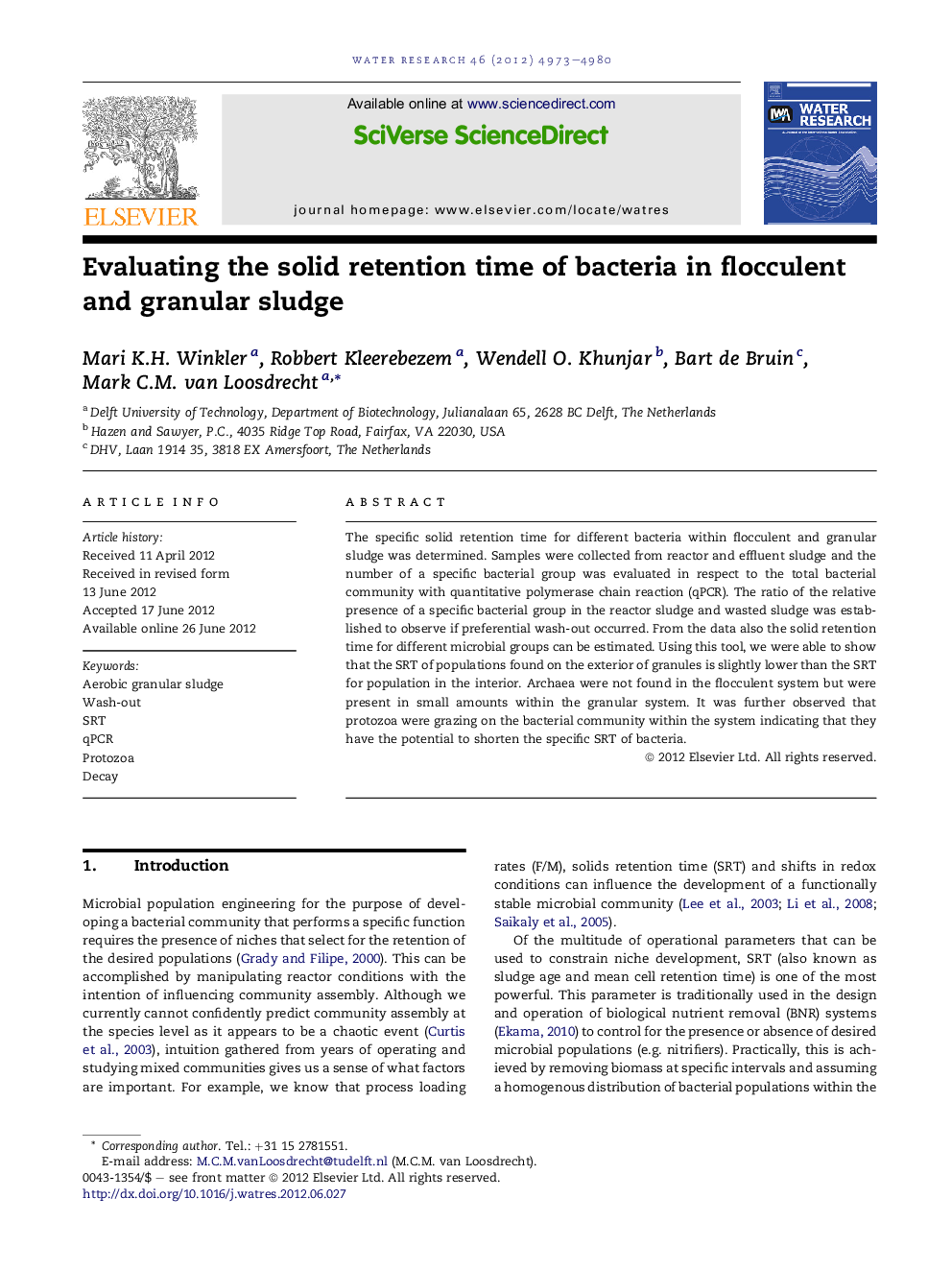| Article ID | Journal | Published Year | Pages | File Type |
|---|---|---|---|---|
| 4482726 | Water Research | 2012 | 8 Pages |
The specific solid retention time for different bacteria within flocculent and granular sludge was determined. Samples were collected from reactor and effluent sludge and the number of a specific bacterial group was evaluated in respect to the total bacterial community with quantitative polymerase chain reaction (qPCR). The ratio of the relative presence of a specific bacterial group in the reactor sludge and wasted sludge was established to observe if preferential wash-out occurred. From the data also the solid retention time for different microbial groups can be estimated. Using this tool, we were able to show that the SRT of populations found on the exterior of granules is slightly lower than the SRT for population in the interior. Archaea were not found in the flocculent system but were present in small amounts within the granular system. It was further observed that protozoa were grazing on the bacterial community within the system indicating that they have the potential to shorten the specific SRT of bacteria.
► The specific solid retention time of bacteria (ΘA) was determined with qPCR. ► A comparison of ΘA was conducted for flocs and granules. ► Archaea were not found in the flocs but were present within granules. ► Protozoa were grazing on the bacterial community.
